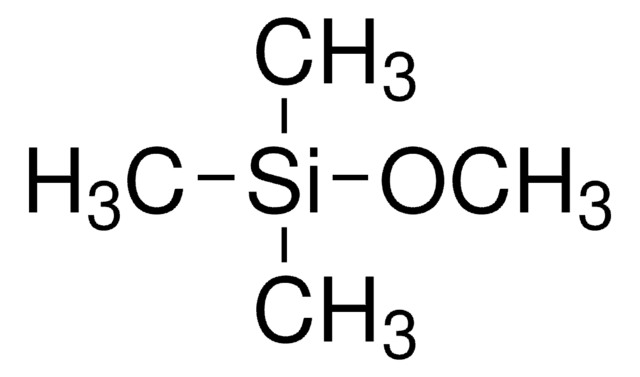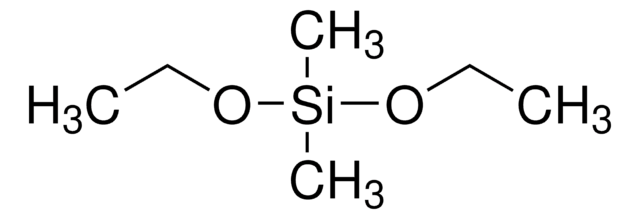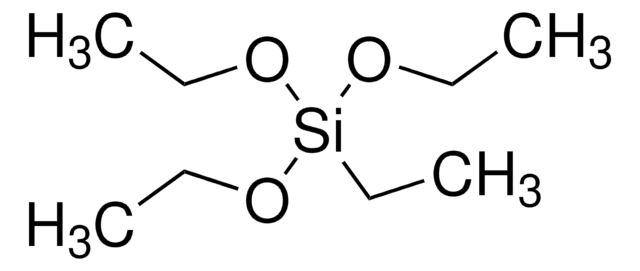440175
Trimethoxymethylsilane
95%
Synonym(s):
MTMS, Methyltrimethoxysilane
Sign Into View Organizational & Contract Pricing
All Photos(1)
About This Item
Linear Formula:
CH3Si(OCH3)3
CAS Number:
Molecular Weight:
136.22
Beilstein:
1736151
EC Number:
MDL number:
UNSPSC Code:
12352103
PubChem Substance ID:
NACRES:
NA.22
Recommended Products
Quality Level
Assay
95%
form
liquid
impurities
3% methyl alcohol
refractive index
n20/D 1.371 (lit.)
bp
102-104 °C (lit.)
density
0.955 g/mL at 25 °C (lit.)
SMILES string
CO[Si](C)(OC)OC
InChI
1S/C4H12O3Si/c1-5-8(4,6-2)7-3/h1-4H3
InChI key
BFXIKLCIZHOAAZ-UHFFFAOYSA-N
Looking for similar products? Visit Product Comparison Guide
Related Categories
Application
Trimethoxymethylsilane (MTMS) is one of the key precursor for the synthesis of:
- Monolithic silica columns with various skeleton sizes for capillary liquid chromatography.
- Ionogels, where an ionic liquid is confined within silica-derived networks.
- Monolithic silica aerogels via acid-base sol-gel polymerization.
- Hydrophobic, flexible, and ultralightweight silylated nanocellulose sponges for the selective removal of oil from water.
Signal Word
Danger
Hazard Statements
Precautionary Statements
Hazard Classifications
Flam. Liq. 2
Storage Class Code
3 - Flammable liquids
WGK
WGK 3
Flash Point(F)
48.2 °F
Flash Point(C)
9 °C
Personal Protective Equipment
dust mask type N95 (US), Eyeshields, Gloves
Choose from one of the most recent versions:
Already Own This Product?
Find documentation for the products that you have recently purchased in the Document Library.
Customers Also Viewed
Methyltrimethoxysilane based monolithic silica aerogels via ambient pressure drying.
Bhagat S D, et al.
Microporous and Mesoporous Materials : The Official Journal of the International Zeolite Association, 100(1-3), 350-355 (2007)
Ultralightweight and flexible silylated nanocellulose sponges for the selective removal of oil from water.
Zhang Z, et al.
Chemistry of Materials, 26(8), 2659-2668 (2014)
Monolithic silica columns with various skeleton sizes and through-pore sizes for capillary liquid chromatography.
Motokawa M, et al.
Journal of Chromatography A, 961(1), 53-63 (2002)
Ionogels, new materials arising from the confinement of ionic liquids within silica-derived networks.
Neouze M A, et al.
Chemistry of Materials, 18(17), 3931-3936 (2006)
Mary E Robbins et al.
Journal of the American Chemical Society, 125(20), 6068-6069 (2003-06-06)
The release of nitric oxide (NO) from polymers has proven to be highly effective at inhibiting platelet adhesion and thus enhancing the blood compatibility of medical implants. Micropatterning techniques were used to design surfaces that release NO while preserving the
Our team of scientists has experience in all areas of research including Life Science, Material Science, Chemical Synthesis, Chromatography, Analytical and many others.
Contact Technical Service













